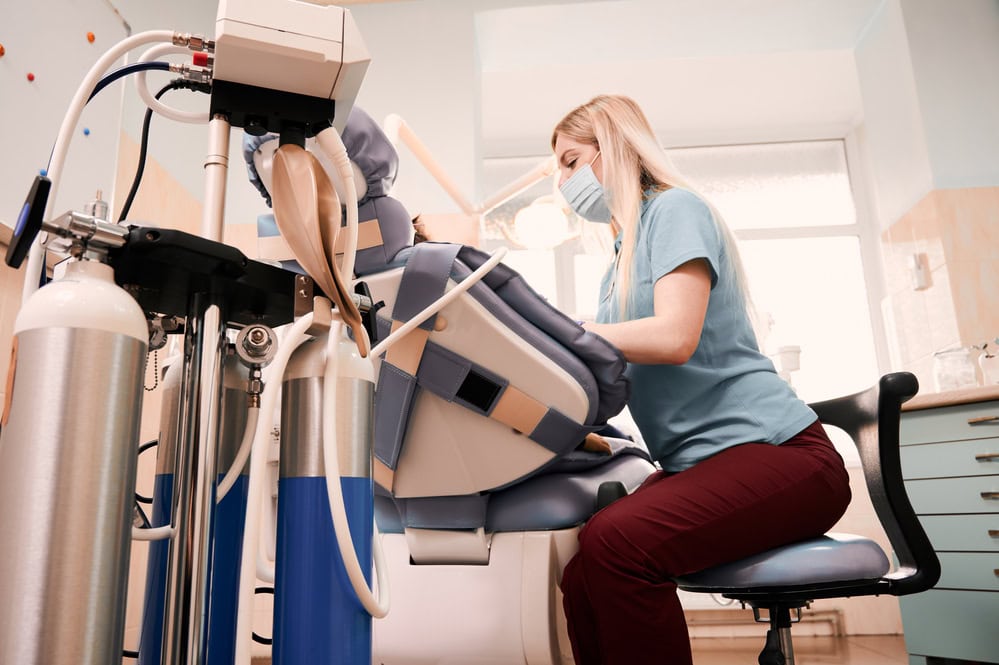Under various circumstances, tooth extraction becomes the solution for optimal oral health.
When impacted wisdom teeth cause pain, an oral surgeon may perform an extraction. Severe tooth decay often necessitates removal to prevent further issues. Overcrowding can lead to alignment problems, making extraction beneficial. Infections and abscesses sometimes require tooth removal for effective treatment. Those needing orthodontic care might consider tooth extraction for optimal results. Understanding these situations can aid in maintaining a healthy mouth.
The decision to extract teeth plays a vital role in preserving oral health.
When Is Tooth Extraction Necessary?
Dentists try to save natural teeth, but extraction may be necessary in cases of severe decay, fracture, impaction, overcrowding, persistent pain, severe infection, advanced gum disease, or antibiotic-resistant infection.
6 main reasons of tooth extraction is explained below:
1. Impacted Wisdom Teeth
Impacted wisdom teeth, also known as third molars, can cause pain and complications if they do not fully emerge through the gum line. When wisdom teeth are impacted, meaning they are trapped below the gum line, a skilled oral surgeon often needs to extract them. Removing impacted wisdom teeth typically requires a surgical procedure that involves making an incision in the gum and sometimes removing a portion of the bone to access the tooth.
Proper post-operative care is crucial for a smooth recovery after the extraction. Patients may experience swelling, which can be managed with ice packs and prescribed medications. Gauze should be placed over the extraction site to control bleeding, and patients must follow specific instructions provided by their oral surgeon to prevent complications and promote healing.
2. Severe Tooth Decay
If left untreated, severe tooth decay can lead to significant oral health issues and discomfort for individuals. Extraction may be necessary to prevent further complications when decay has progressed to a severe stage. In such cases, the following considerations are important:
- Treatment Options: A dentist may recommend tooth extraction as the most effective treatment for severe decay to prevent the spread of infection.
- Surgery Procedure: The extraction procedure involves carefully removing the decayed tooth from its socket using specialised tools such as forceps.
- Healing Process: After the extraction, proper care of the extraction site is crucial to facilitate healing and prevent complications.
- Bone Preservation: In some cases, additional steps may be taken during the extraction to preserve the surrounding bone structure for future dental procedures.
Dentists play a vital role in assessing the extent of decay and determining the appropriate course of action to preserve oral health and overall well-being.
3. Overcrowding Issues
Addressing overcrowding issues in the mouth requires careful evaluation by a dental professional to determine the most appropriate treatment plan. Overcrowding occurs when the mouth has insufficient space to accommodate all teeth properly, leading to alignment problems and potential oral health issues. In such cases, tooth extraction is a solution to alleviate overcrowding and restore optimal oral health.
The extraction of teeth in overcrowded mouths is a common dental procedure aimed at creating space and preventing further complications. By carefully assessing the positioning of each tooth and considering the patient’s overall oral health, a dental professional can determine the necessity of extractions to effectively address overcrowding issues. While orthodontic treatments like braces or aligners can sometimes correct overcrowding without extraction, severe cases may require the removal of specific teeth to achieve the desired results.
Prioritising oral health through appropriate dental interventions, such as extractions when necessary, can prevent future orthodontic issues and promote overall well-being. By promptly addressing overcrowding issues, individuals can maintain a healthy and harmonious smile for years.
4. Infection and Abscesses
In cases of oral infection and abscesses, prompt diagnosis and appropriate treatment are crucial to prevent further complications and preserve oral health. When facing such issues, it is essential to consider the following:
- Immediate Attention: Seek dental care promptly to address the infection and prevent it from spreading to other mouth areas.
- Evaluation for Tooth Extraction: In severe cases where the infection has caused extensive damage and jeopardises surrounding tissue, tooth extraction may be necessary to safeguard oral health.
- Medication and Procedures: Dentists may prescribe antibiotics to combat the infection and recommend procedures, such as root canals, to eliminate the abscess.
- Managing Discomfort: Patients may experience discomfort due to the infection and abscess; however, timely intervention can alleviate this discomfort and minimise the risk of further complications.
5. Orthodontic Treatment Needs
Assessing the necessity for orthodontic treatment is essential in maintaining optimal oral health and addressing any misalignments that may impact overall dental function. Orthodontic treatment aims to correct crooked teeth, overcrowding, overbites, underbites, and jaw misalignments. These conditions affect the aesthetics of one’s smile and play a crucial role in oral health. Misaligned teeth can make proper dental care challenging, increasing the risk of tooth decay, gum disease, and other dental issues.
During a dental appointment, a dentist may recommend orthodontic treatment to improve jaw alignment, enhance tooth function, and prevent future dental problems. Addressing alignment issues early on may help avoid the need for tooth extraction in some cases. Promptly addressing concerns related to wisdom teeth and other misalignments can also help individuals avoid more invasive procedures, such as oral surgery, in the future. Prioritising orthodontic treatment can contribute significantly to long-term oral health and overall well-being.
6. Irreparable Damage or Trauma
Irreparable damage or trauma to the teeth can result from various accidents, injuries, or underlying oral health conditions. When such situations occur, tooth extraction may be necessary to prevent further damage and ensure the mouth’s overall health. Here are some key points to consider:
- Severity of the Damage: Assessing the extent of the irreparable damage or trauma is crucial in determining the need for extraction.
- Impact on Surrounding Tissue: Damage to the tooth can also affect the surrounding tissue and jaw, making extraction essential to prevent complications.
- Consulting a Dentist: Seeking professional care from a dentist is vital in evaluating the situation and determining the appropriate course of action.
- Preventive Measures: In some cases, tooth extraction may be necessary to prevent future issues and maintain oral health.
In cases of severe trauma or irreparable damage, tooth extraction, under the guidance of a dentist, is often the best course of action to protect the individual’s overall well-being.
Key Takeaways
Tooth extraction may become necessary in various situations, such as impacted wisdom teeth, severe tooth decay, overcrowding issues, infections, orthodontic needs, or irreparable damage.
While some argue that extraction should be a last resort, oral health should be prioritised and further complications prevented.
Consulting with a dental professional is crucial to determine the best course for maintaining oral health.
For expert advice on tooth extraction and optimal oral health, schedule a consultation with the best dentist at Kensington, VIC, 3031 today. Your smile deserves the best care!




